Our first stop was in the Dragoon museum. Dragoons were armed, organized and equipped like infantrymen but were mounted on horses. This enabled them to move much faster across country, especially rocky or boggy ground. They also cost less than calvary since their rate of pay was lower.
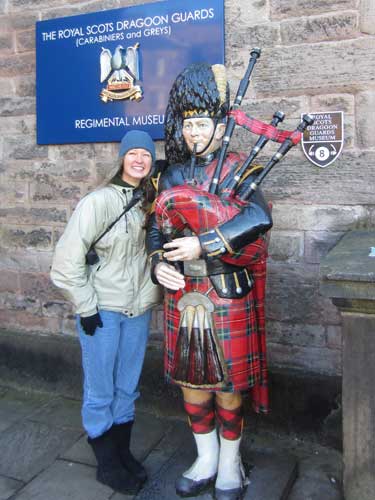

Regimental lineage chart
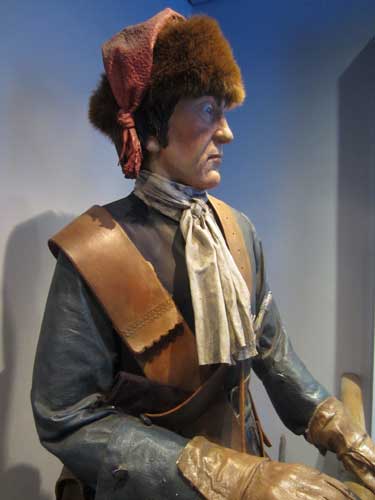
An example from around 1680
The next exhibit was on prisons of war as they might have looked in 1781. The castle vaults were used as prisons of war for over 50 years, from 1757 - 1815 (including the Seven Years War, the War of American Independence, and the Napoleonic Wars).
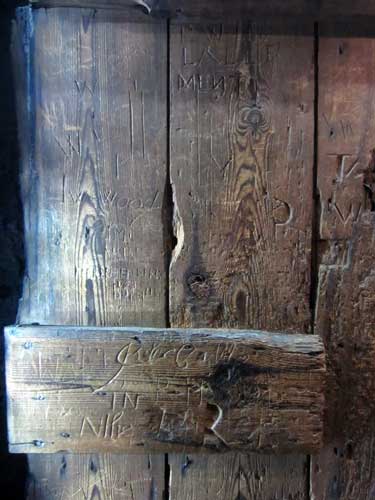
The wooden doors are covered with graffiti from those incarcerated behind them.
Prisoners often had a lot of free time on their hands to make things like models or to forge banknotes (to bribe their guards or use if they escaped). They used bones from their rations to make die stamps. The rough print was made and the details were filled in using quill pens. They were good enough to worry the banks.
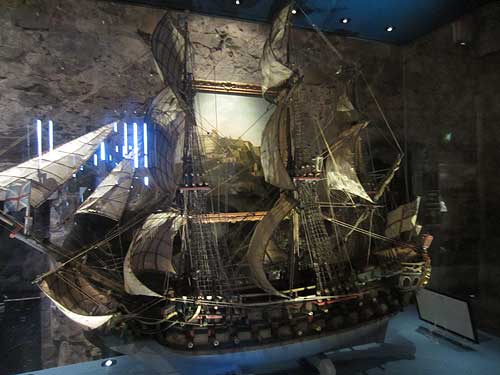
This model of a warship was made by French Prisoners here in the 1750's.
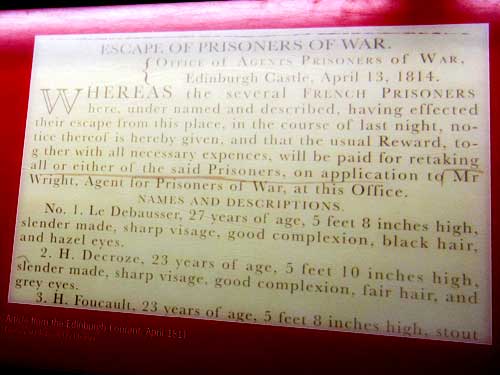
Overcrowding of the prison led to many escape attempts. In 1811, 49 prisoners got out... one died and the rest were quickly recaptured.
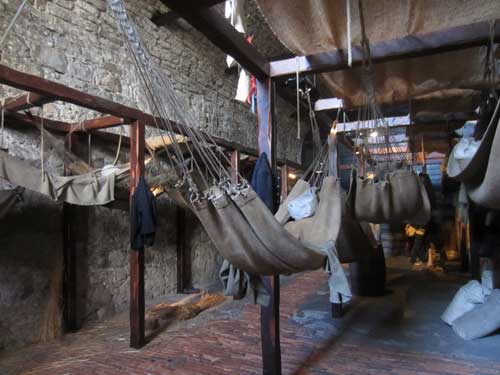
The living conditions
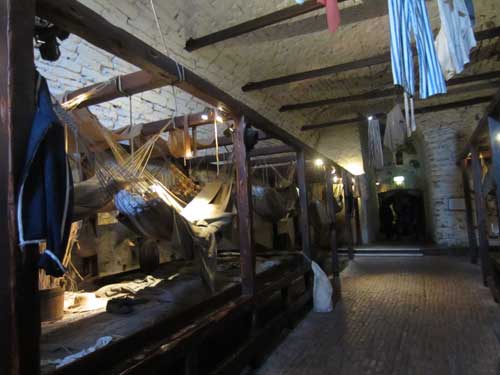
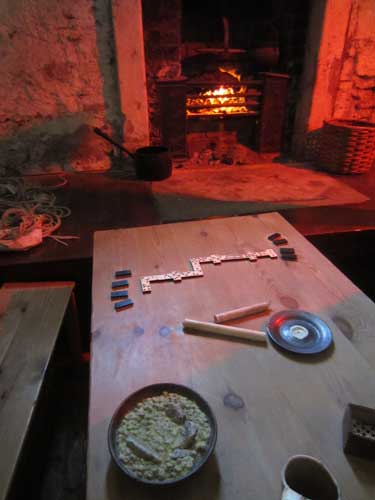
Next was a military prison from 1847. It was meant for soldiers from the castle garrison or from visiting regiments who were either awaiting court martial or serving short sentences. It was closed in 1923 but reopened during World War II.
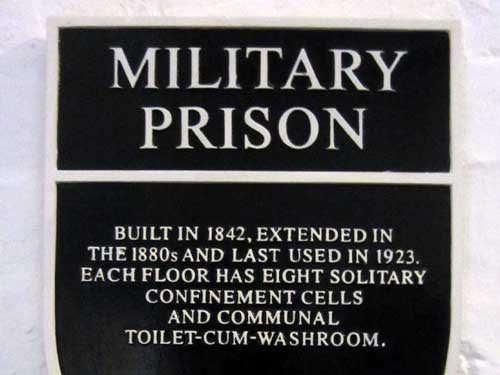
Apparently the word 'cum' means "combined with". This, however, still does not seem like a good choice of words (given its other meanings) to use in a men's prison bathroom.

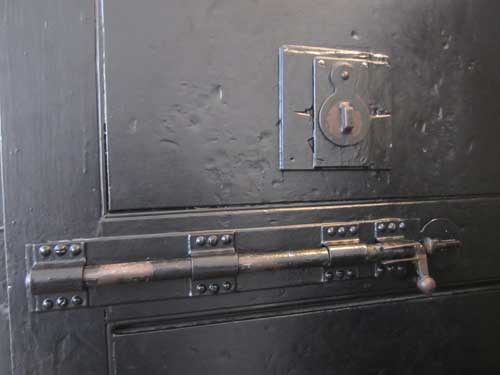
That's a really long bolt!
In the Middle Ages, imprisonment was not considered a punishment. Prisons only existed to hold criminals until a ransom or fine was paid or the appropriate physical punishment was carried out. Many of these prisons were dark, dank pits within a castle.
In general, flogging was the accepted form of punishment (in 1836, the maximum number of lashes permitted was 200). Military punishments could be even more severe. Flogging was the standard with anything from 50 - 2,000 lashes (any more than 1,000 was likely to result in death). Other punishments including riding a ridged-back wooden horse, being suspended over a sharp spike by one's wrist, having the ankles tied to the wrists behind the back and then suspended above the ground. The death penalty was used for murder, treason or rape.
In 1846, soldier Frederick John White died from receiving 150 lashes at Hounslow Barracks. This caused a public uproar which spurred a reform of military disciplinary codes. White was the last British military man to suffer death by flogging. Once flogging was abolished and imprisonment was used instead, more prisons needed to be built, both military as well as civilian.
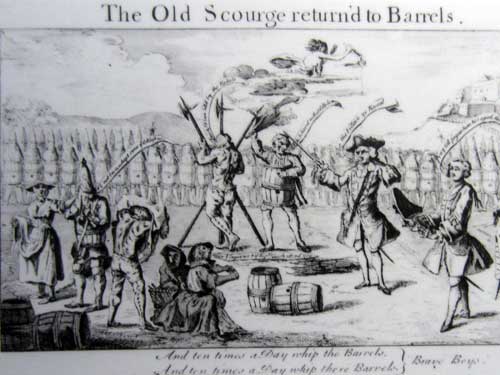
Flogging on the esplanade here at the castle in 1747
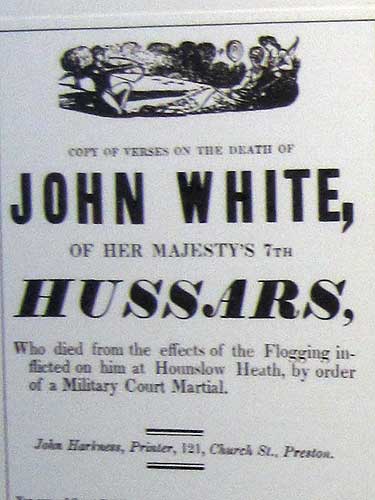
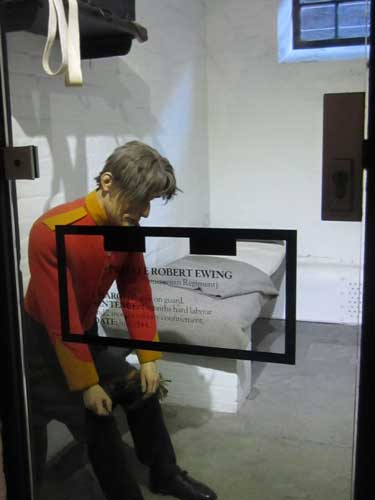
In 1844, Private Robert Ewing was found drunk on guard. His punishment was 2 months hard labor (which could be stone breaking, yard cleaning, even things like separating the strands of old ropes for reuse) and 2 months solitary confinement.

In the 1880's, improvements were made by adding extra cells and a communal washing and toilet area (so individual cells no longer required these things).
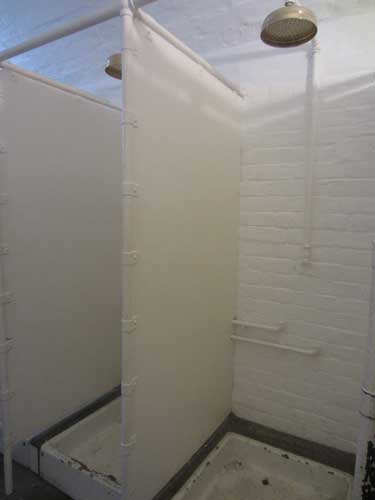
We continued making our way deep into the heart of the castle... eventually arriving at the Scottish Crown Jewels exhibit.
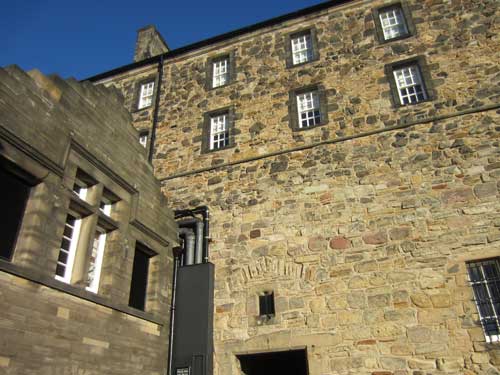
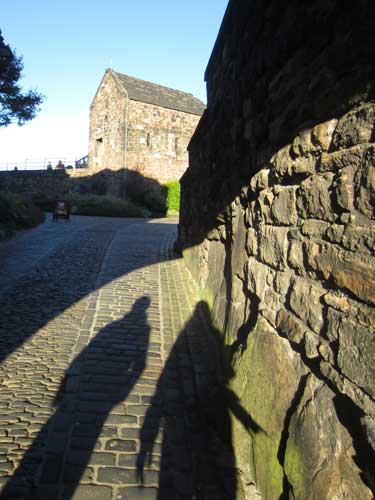
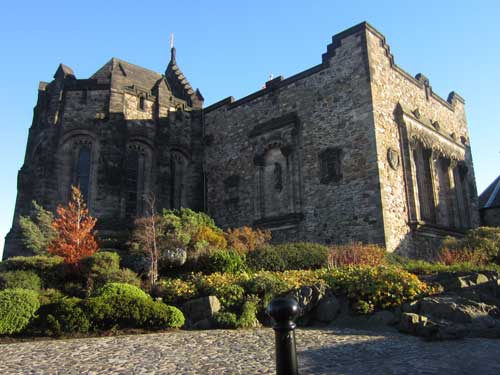
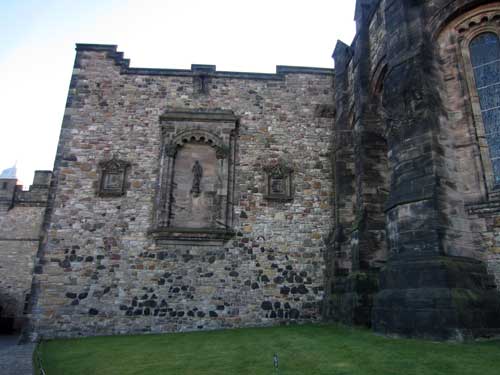
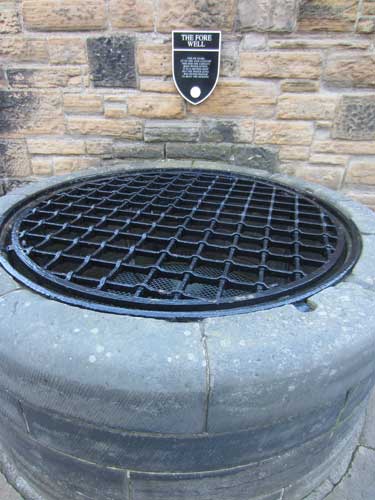
The old well
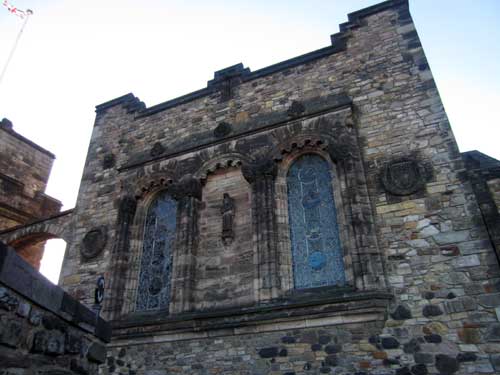
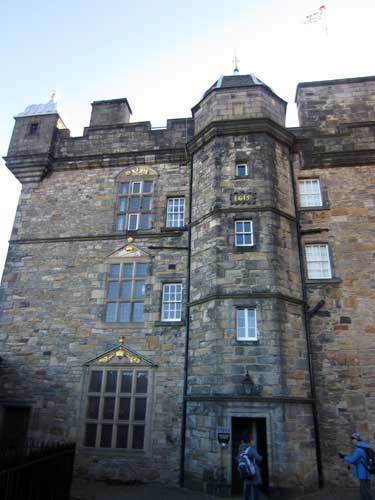
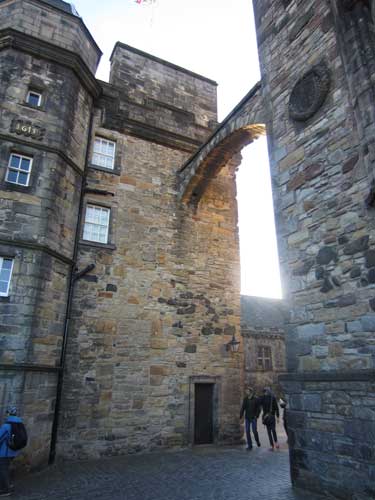
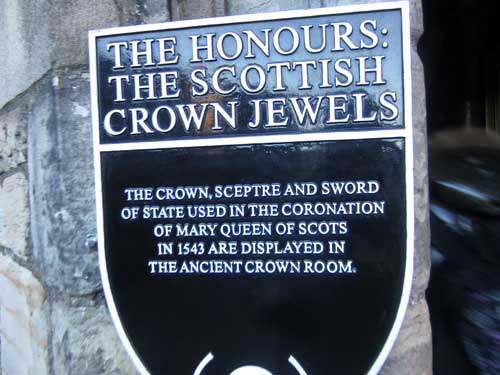
No photos were allowed inside (so all I have is a postcard I bought). We did ask one of the guards about where it had cracked and she pointed out a fine line in the corner of the stone.
Here's another story about how Scotland got its name: In ancient Egypt, a warrior called Gaythelos fell in love with Scota, the daughter of Pharaoh Chencres. They got married and in her honor, Gaythelos' warriors took her name, calling themselves Scots. They wandered across the wilderness of north Africa in search of a homeland. Jacob, one of the men, rested his head on a stone and had a dream about angels ascending to heaven. When he told the others, they decided to carry "Jacob's pillow" with them, saying that wherever the stone rested, the Scots would rule. And so, they dragged the stone with them... all the way up to Ireland and then over to west Scotland.
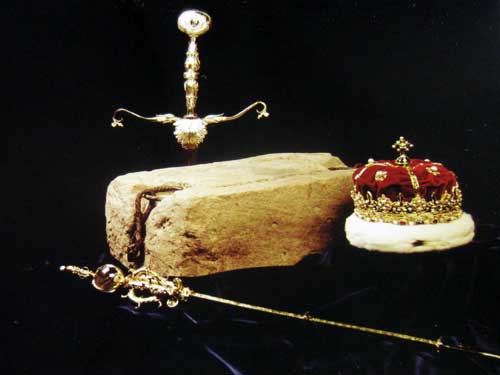
Those things at each end of the stone are iron rings, supposedly for transportation.
We then got to walk around inside the Royal Palace, including the lovely Laich Hall.
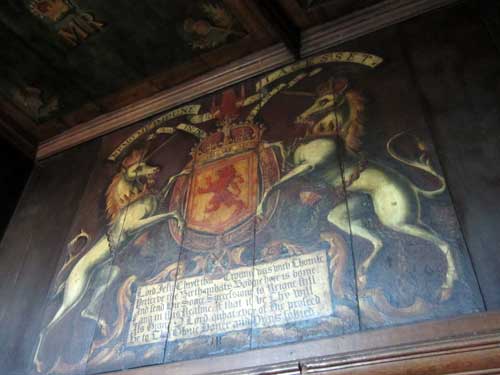
A double unicorn
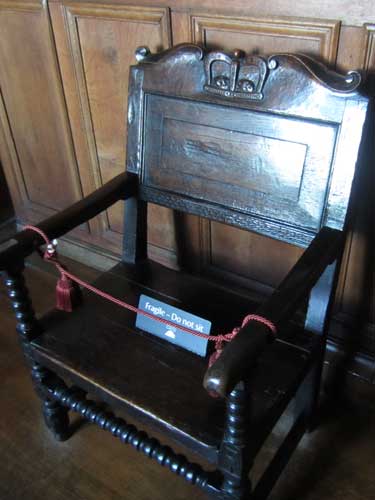
The chair looks quite simple by our standards but it does have a crown on it indicating it was for royalty.
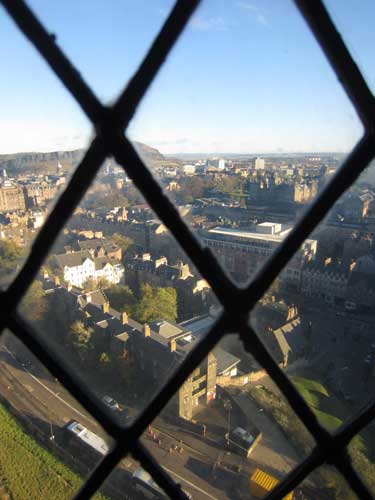
Quite a view!
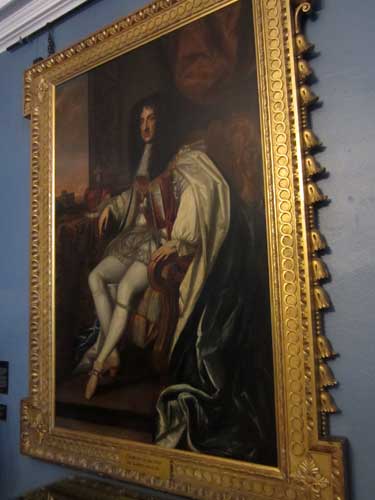
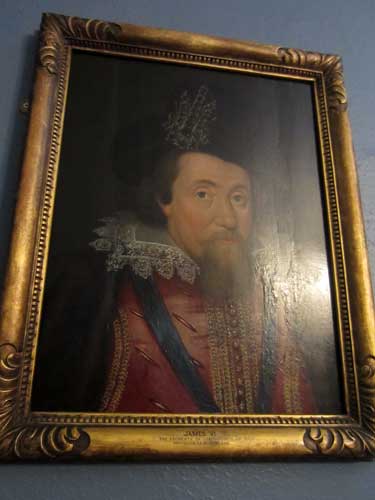
James VI (1566 - 1625) was only one year old when he was crowned King of Scotland. His mother, Mary Queen of Sctos had been forced to abdicate. She was executed by Elizabeth I, Queen of England, when James was 20... putting him next in line to the English throne. In 1603, Elizabeth died and James became James I, the first monarch to reign over England, Scotland and Ireland.

Laich Hall (laich meant "low") was created in 1617 (as restored to look like here) to serve as an outer reception room and dining chamber for King James. James had actually been born in a tiny room at the far end of the hall.
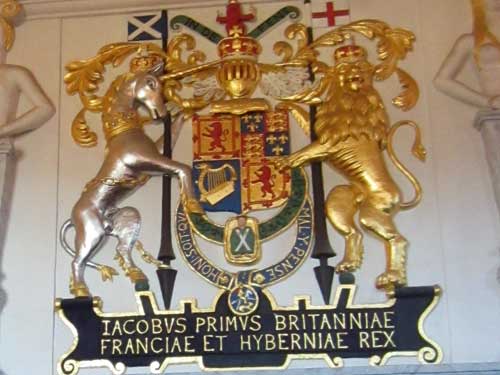
The lion (England) now appears with the unicorn (Scotland).
Iacobvus (Latin for James) Primus (first) Britanniae (Britain meaning England & Scotland)
Franciae (France) et (and) Hyberniae (Ireland) Rex (king)


